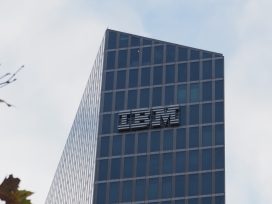Nutanix, VMware Tout Multi-Cloud Database

There was a surprise tucked inside the recent launch of the Era 2.0 multi-cloud database management solution from Nutanix (NTNX). Along with a spate of enhancements, the vendor announced its own database-as-a-service (DBaaS) designed for multi-cloud environments.
The service, called SKALE DB, is currently available through channel partner HCL Technologies (HCLTECH), which also partnered with Nutanix in creating the service. Details are scarce, but an online Nutanix/HCL brochure indicates that SKALE DB, hosted on HCL systems, works with AWS, Azure, Google Cloud Platform, and IBM Cloud. Supported databases appear to include Oracle, Microsoft SQL Server, MySQL, MariaDB, Postgres, and SAP HANA.
The surprise isn’t that this is DBaaS. That’s offered by all the major cloud suppliers, including Amazon (AMZN) AWS, Google (GOOGL) Cloud Platform, Microsoft (MSFT) Azure, Oracle (ORCL) Cloud, and IBM (IBM) Cloud — as well as the major database management system (DBMS) companies, such as SAP SE (SAP), MongoDB (MDB), and Couchbase, among others.
The difference is the capability to offer DBaaS across multiple clouds from a single source of management. And if Nutanix/HCL succeeds in doing this, it may be among the first to offer the capability.
One Stack to Rule Them All
Nutanix’s offer of an multi-cloud DBaaS is a logical step. The company has clearly articulated its strategy toward segueing its hyperconverged infrastructure (HCI) technologies into multi-cloud environments. In September, the company introduced multi-cloud improvements via DevOps additions, support for solid-state drives, and expanded relationships with cloud suppliers and channel partners.
Added to these upgrades is the latest iteration of the Nutanix database system, Era. The 2.0 release announced last week extends Era across multiple on-premises and in-cloud clusters, along with newly added support for SAP HANA and Postgres databases. And of course, there’s the HCL-enabled multi-cloud DBaaS service.
Here’s how Jeremy Launier, Nutanix senior director of product management, and Chris Paap, Nutanix senior solutions marketing manager, described in a blog how the enhancements of Era 2.0 lay the groundwork for multi-cloud DBaaS:
From a single Era management plane, DB Ops teams can now rapidly provision standalone and highly available, multiregion and multicloud databases. This means databases provisioned by Era and running on Nutanix hyperconverged infrastructure (HCI) work and behave the same way, with the same best practices, independent of where they run.
The goal Nutanix seeks with HCL is replacing silo’d, on-premises database systems with a “full stack” of software hosted by HCL that can manage and deliver Nutanix Era capabilities across hybrid — and multi-cloud — operations.
Nutanix isn’t alone in its multi-cloud DBaaS ambitions. The other hyperconverged software leader VMware (VMW) makes similar claims. Consider the following passages from a blog by Michael Rebmann, senior solution architect at VMware:
The technology stack consisting of vSphere, vSAN, NSX, vRealize and some management components form the software-defined data center ... is called VMware Cloud Foundation. A technology stack that allows you to experience the ease of public cloud in your data center. Again, if wanted and required, you can run this stack on top of any hyperscaler like AWS, Azure, Google Cloud, Alibaba Cloud, Oracle Cloud or IBM.
Build your own templates or blueprints (Infrastructure as Code) to deliver services IaaS, DBaaS, CaaS, DaaS, FaaS, PaaS, SaaS and DRaaS, which can be ordered and consumed by your users or your IT. Put a price tag behind any service or workload you deploy, and include your public cloud spending as well (e.g. with CloudHealth) in this calculation.
Multi-Cloud DBaaS Raises Questions
Despite the clear references to centrally managed multi-cloud DBaaS, actual evidence of this configuration remains hazy. Nutanix for one isn't pushing this concept too much. Instead, Nutanix and HCL execs tout the performance improvements large enterprises are getting from centralized control over their cloud-based DBMSs. And they point to the efficiencies of relying on a service instead of dedicated in-house and external teams to drive database applications.
Both Nutanix and VMware must acknowledge that most enterprise workloads haven't moved off premises, let alone into hybrid or multi-cloud setups. Customers have many questions about security, manageability, orchestration, and billing.
Still, according a recent report from Futuriom, streamlining application connectivity for more effective management is one of the top factors driving enterprise adoption of multi-cloud environments. So it seems logical to assume that database management will be one of the targets for multi-cloud transformation.
It is also logical that a sophisticated, hosted software stack could manage multiple databases in multiple clouds from a single location. For now, though, it's not clear how far along either Nutanix/HCL or VMware actually is in meeting that goal. But the thought is there, and the evidence is sure to follow. Expect to see more in this area in the coming months.



















